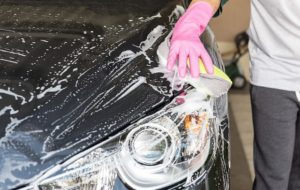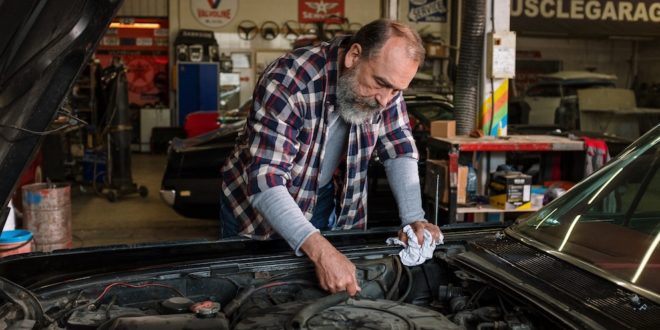Owning a car requires more than just filling it with petrol and getting a warrant of fitness once or twice a year. Keeping it in good working order takes time but helps you get the most from your vehicle and can retain the value of your car. Regular maintenance can reduce any costly repair work needed and keeps your passengers safer. Below are some automobile tips for maintaining your car in the finest conditions:
Tyres – next time you’re at the petrol station, take a moment to check your your tyre pressure. Making sure your tyres are inflated to the correct pressure keeps petrol costs down and extends the life of your tyres. While you’re there you can also check the tread – there should be no less than 1.5mm of tread at any one point (don’t forget the spare!). Rotating the position of the tyres on a regular basis will help your tyres wear evenly and last longer. It’s recommended to balance the tyres every 10,000 km and you could get a wheel alignment at the same time.
you’re there you can also check the tread – there should be no less than 1.5mm of tread at any one point (don’t forget the spare!). Rotating the position of the tyres on a regular basis will help your tyres wear evenly and last longer. It’s recommended to balance the tyres every 10,000 km and you could get a wheel alignment at the same time.
Brakes – one of the most important automobile tips for the maintenance of breaks is to top up the brake fluid reservoir occasionally. This is to be especially done if you notice the brakes becoming wobbly and getting slow.
Battery – for battery maintenance, clean the battery terminals regularly and apply some grease. You can also check the battery’s distilled water level.
Interior – the interiors should be vacuumed regularly. This helps to prevent any deposits of sand, grime, dust, salt, etc. The dash should be wiped, instruments and seats should also be cleaned using specialty car cleaners. If the interiors have leather, you should not use any high alkaline content as they can actually bleach the colour off the leather.
Exterior – regularly washing your car helps protect the car’s paint job. Use a good quality automotive soap and apply it with a foam sponge using straight lines, not circular motions. Rinse with clean water and dry with a microfiber cloth or leather chamois. Air drying leaves behind minerals from the water, which can be harmful to the paint. Waxing your car every few months puts a protective seal on top of the paint which guards against dirt, dust, pollution, water, and other harmful substances. It can also hide small scratches and minor blemishes.
Waxing your car every few months puts a protective seal on top of the paint which guards against dirt, dust, pollution, water, and other harmful substances. It can also hide small scratches and minor blemishes.
Engine Oil – check the engine oil has not gone below the minimum indicator level on the dipstick. Check the engine oil isn’t dark, thick or sludgy. It is recommended to change the oil approximately every 10,000kms.
Windows – Check the window washer level and, if necessary, top it up. Clean or wipe the wiper blades and replace if the rubber has started to perish. Check the front windscreen for chips or cracks. Quite often, if a chip is caught early, it can be repaired easily enough.
Lights – all the lights like, head lights, brake lights, and hazard lights/indicators should be checked and cleaned regularly. Some fuses and bulbs could be kept in the vehicle as spares.
Hoses – the automobile tips for hoses state that they should be inspected every month. The same is true for the belts. In case you feel that a hose appears bad or has become really hard, then it should be replaced.
Exhaust – the exhaust should be given proper attention. They should not be loose; also their clamps should not be broken. Look for any possible holes in the pipes or the muffler. Change any damaged or rusty parts.










T0NYC0 - 5 years ago
we are lucky that we still have WOF’s as quite a number of motorists don’t even know how to pop the hood to look at things like oil and water, and probably it is not necessary with a modern car.
For people who have no knowledge or desire to check their car’s workings, the minimum is easy to do. Check your lights – when parked in front of a shop window, flick your lights and see if they work on high and low beam. Get the kids to walk around the car to check indicators and lights occasionally. Check that you can see over the steering wheel, not through it, adjust the seat height if necessary. Get to know where the needle sits on the temperature gauge, if it varies from the normal half way, see your mechanic urgently. Fill you windscreen washer bottle from time to time, but this involves raising the hood and the possibility of pouring water into the wrong place! If your car is new and does not need a WOF, still get a mechanic to check under the hood every 6 months.